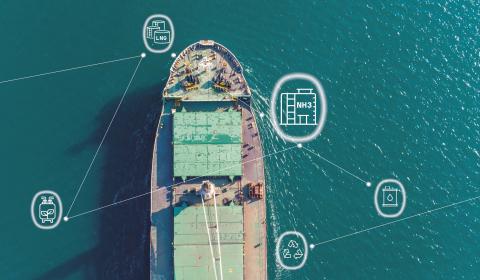
Decommissioning: the challenge of the decade
Responsible and cost-effective decommissioning will be the industry’s main challenge as unprecedented numbers of offshore assets reach the end of their lives in the 2020s.
Decommissioning is coming of age in the 2020s, as increasing numbers of assets reach the end of their production life. Experts predict that the industry will spend at least $82 billion on global decommissioning over the next decade, addressing challenges such as boosting safety, improving cost efficiency, and limiting environmental impact.
This means the offshore industry will spend the coming years developing standardized decommissioning practices, with owners working hand-in-hand with classification societies, technical experts and environmentalists to reach their goals.
The promise of new technologies
Technological innovation is one promising answer to a number of decommissioning challenges. The development of virtual technology to optimize the removal of topside and subsea equipment, for example, is helping to bring down costs and boost safety. Using a virtual model, operators can simulate decommissioning options, helping them choose the right strategy for their business.
For the removal of subsea equipment, virtual tech and simulation can also support the planning and sequencing of removal, allowing users to deploy the right vessels. This, in turn, limits expenditure, facilitating decommissioning project management and increasing efficiency.
Other innovations coming down the line include satellite technologies that monitor end-of-life wells for leaks, improving safety and helping owners avoid future environmental disasters.
An eye on the environment
Many operators are uncertain how to remove assets without damaging the seabed. Complete removal is often considered to have the least long-term environmental impact, and may be the right solution. However, assets that have been in place for decades may have become integrated into the marine environment, meaning their removal could destroy flourishing marine ecosystems. In this case, operators are working with the relevant authority to assess the environmental impact of their decommissioning strategy and choose the optimum solution.
Reducing the carbon footprint of decommissioning activities has also become a priority, as owners focus on meeting a net-zero carbon emissions agenda. While new technologies and evolving best practices are supporting this goal, another trend is emerging: repurposing aging asset infrastructure to house renewable energy solutions. With Bureau Veritas Solutions Marine & Offshore supporting asset owners with new technologies, feasibility studies and more, owners can be at the forefront of energy development for the decades to come.
Breathing new life into aging assets
To delay decommissioning, many operators will try to extend the service life of assets by re-evaluating their reservoir capacity, adding new reservoirs, and even redeploying units. Life extension may involve structural modifications, but, in some cases, it can also be achieved by re-evaluation of fatigue performance using models updated to reflect the current condition of the structure.
An inspection plan correlated to life extension analyses and integrated into asset integrity management can generate significant cost savings. Drawing on experience gained on more than 180 units in various offshore environments, Bureau Veritas Solutions Marine & Offshore has developed state-of-the-art tools to support life extension calculations. We can help operators assess the condition of their units and select their strategy for life extension.
End-to-end asset support
As an industry-leading expert with the right technology, unrivaled expertise, and extensive experience, Bureau Veritas Solutions Marine & Offshore supports asset operators throughout the entire asset lifecycle – from design through to management, life extension and decommissioning. We harness asset expertise, world-class project management capabilities, and cutting-edge technology to find solutions to the decommissioning challenges our clients will face throughout the 2020s.










